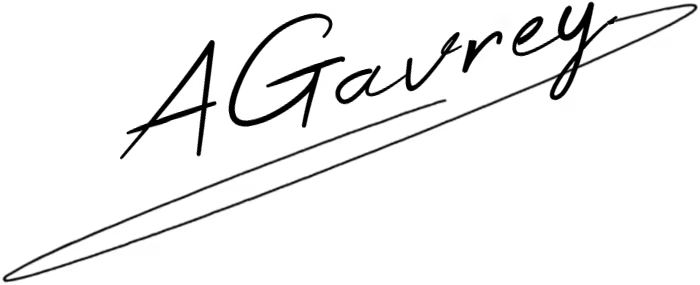Understanding Income Tax in Utah (UT)
For residents of Utah, understanding state income tax regulations is essential for managing personal finances and complying with legal requirements. Utah has a unique income tax structure compared to other U.S. states, and being aware of these details can significantly impact your financial planning. This guide explores key aspects of Utah’s income tax system, including rates, credits, filing requirements, and frequently asked questions to ensure a thorough understanding of all related tax responsibilities.
Utah’s Income Tax Rate and Bracket
Utah applies a flat income tax rate of 4.85% to all taxable income levels, which simplifies the tax calculation process compared to states with progressive tax rates. This rate is applied consistently, regardless of a taxpayer’s income, which means that both high and low earners are taxed at the same rate. For residents, this flat rate means greater predictability in annual tax payments and relatively straightforward tax calculations.
While Utah’s tax rate remains consistent across income levels, certain tax credits and deductions can lower the effective tax rate. These credits are available to eligible taxpayers and are based on factors like income, filing status, and specific conditions met by the taxpayer. Therefore, understanding available credits is crucial for optimizing tax returns and reducing the overall tax burden.
| Income Level | Tax Rate | Applicable Credits |
|---|---|---|
| All Income Levels | 4.85% | Various credits based on eligibility |
Utah’s reliance on a single tax rate means that residents don’t have to navigate multiple tax brackets, simplifying compliance. However, being informed about available credits and deductions is essential to minimize liabilities, especially since these adjustments can lower the effective tax rate significantly, especially for qualifying low- and middle-income taxpayers.
Tax Credits and Deductions in Utah
Utah provides several tax credits designed to relieve certain taxpayer groups of additional tax burdens. These credits can substantially lower tax liabilities and should be explored by taxpayers who meet the eligibility requirements. Some of the prominent credits include the Utah Taxpayer Tax Credit and the Social Security Benefits Credit. Each credit has specific criteria that must be met for the taxpayer to qualify.
The Utah Taxpayer Tax Credit, for instance, is based on income levels, with lower-income taxpayers potentially receiving larger credits. Similarly, the Social Security Benefits Credit is tailored to assist taxpayers receiving Social Security benefits, helping them reduce the tax impact of their benefits. Both of these credits are refundable, meaning they can either reduce taxes owed or provide a refund.
- Utah Taxpayer Tax Credit: Reduces the effective tax rate for qualifying low- and middle-income taxpayers.
- Social Security Benefits Credit: Applicable to those who receive Social Security, reducing the taxable amount of these benefits.
- Retirement Income Credit: For taxpayers aged 65 and older, or for those receiving retirement income.
Additionally, Utah offers various deductions, such as deductions for dependent children and charitable contributions. Understanding how to apply these deductions properly can lead to significant tax savings, especially for families and individuals who contribute to charitable organizations.
Filing Requirements and Deadlines in Utah
In Utah, individuals are required to file state income tax returns if they meet the federal filing threshold and are residents or part-year residents of the state. The filing deadline for Utah state taxes generally aligns with the federal tax deadline, which is April 15. However, if April 15 falls on a weekend or holiday, the deadline is extended to the next business day. It's important to remember that extensions to file do not extend the payment deadline, so taxpayers should be prepared to submit any amounts owed by April 15 to avoid penalties.
For those unable to meet the deadline, Utah allows for an automatic extension of six months. While this provides more time to file, any tax payment owed must still be paid by the original April deadline to avoid penalties and interest. Taxpayers who expect to owe taxes can make estimated payments throughout the year to reduce the amount due at filing time.
- Utah Resident Filing Requirements: Must file if they meet federal income thresholds.
- Automatic Extension: Six-month extension is granted, but payments are still due by April 15.
- Estimated Payments: Recommended for those expecting to owe a significant amount at year’s end.
Taxpayers are encouraged to keep thorough records and submit accurate returns to avoid complications. Misreported or incomplete returns can lead to audits and potential penalties, so it’s advisable to double-check all information prior to filing.
Penalties and Interest for Late Payments
If taxes are not paid by the April deadline, taxpayers may face penalties and interest. The Utah State Tax Commission imposes a 5% penalty per month on unpaid tax balances, up to a maximum of 25%. Additionally, interest is charged on unpaid taxes, calculated based on the federal short-term rate plus 3%.
To avoid these penalties, taxpayers should either pay the full tax owed by the deadline or establish a payment plan if they are unable to pay the full amount. The state offers payment plans, allowing taxpayers to pay off their balances over time; however, interest will continue to accrue on outstanding balances.
| Time Frame | Penalty | Interest Rate |
|---|---|---|
| 1-5 Months Late | 5% per month (up to 25%) | Federal rate + 3% |
| 6+ Months Late | Max 25% penalty | Continues to accrue until paid |
For those facing difficulty meeting tax obligations, it’s best to contact the Utah State Tax Commission early to explore options and mitigate additional costs.
Taxable and Non-Taxable Income in Utah
Utah aligns with federal guidelines when determining taxable income, which includes wages, salaries, business income, and investment returns. However, Utah provides certain exclusions, such as exclusions for Social Security benefits under specific conditions, and for qualifying retirement income.
- Taxable Wages: Income earned from employment or self-employment.
- Capital Gains: Taxed similarly to other income, with no special capital gains rate.
- Retirement Income: Partially exempt depending on the taxpayer's age and income level.
Non-taxable income sources include certain inheritances and gifts, among other federally exempt income sources. Understanding the specifics of what is taxable versus non-taxable can aid in accurate reporting and avoid unnecessary tax liabilities.
Conclusion: Preparing for Utah Income Tax Obligations
Filing and paying Utah state income tax may seem straightforward due to the flat tax rate, but it still requires careful planning and awareness of available credits and deductions. Knowing these details allows taxpayers to minimize their liabilities and avoid common mistakes. Utah residents should aim to meet deadlines, utilize applicable credits, and seek professional advice when needed to ensure accurate and efficient tax management. By staying informed and proactive, Utah taxpayers can navigate the state’s tax system effectively.
Evaluation of IQTaxHub
Pros
Cons

November 14, 2024 at 11:42 p.m.
November 14, 2024 at 11:55 p.m.

